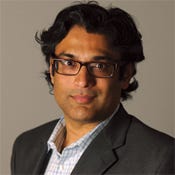4 Ways IT's Role Changing Faster Than Expected
Analysts at the Corporate Executive Board say you'd better update your five-year plan, because a series of radical shifts around IT's value, ownership, and role are happening sooner than envisioned.

Key actions for this year: You can't just lock down a business-unit leader who's gung-ho to implement a SaaS system. Instead, you need to engage that person, by talking about the risks and benefits of a project and being open to letting that leader manage it. IT can act as an intermediary between business leaders and vendors, acting like a buyer's agent. In that role, IT can make sure business leaders know the risks, but without taking over responsibility for their investments. Design alternative delivery tracks that let a business unit take primary responsibility for important local projects that central IT puts a lower priority on.
In terms of integration, focus on what data employees really need, in order to understand where integration with existing systems could have a big impact.
4. IT Gets Embedded In Business Services
Only 11% of large companies have what we call a "multifunctional shared services model"--joining HR, finance, procurement, IT, and other central functions under one roof. As companies look to cut costs, look for this to become more common for IT, especially in the retail, consumer packaged goods, and manufacturing sectors.
Part of this change will involve IT offering what we call "end-to-end IT service packages"-- putting together all the IT resources, technologies, and processes required to enable a specific business outcome. The model streamlines decision making within IT, and changes the conversation with the rest of the business from technologies to outcomes.
Fifty-four percent of large organizations will offer at least some end-to-end IT services by 2012, our research predicts. In contrast, in 2009 almost one-third of organizations had no services, and instead these IT groups followed the traditional model of defining their offerings in terms of infrastructure. A similar number offered services that were confined to applications or infrastructure, as opposed to the business outcome-aligned end-to-end services we expect to become more common.
The key point of chance here is that IT service management was once used just to improve IT infrastructure processes; now it's reshaping how the entire IT organization operates and the services it offers. End-to-end IT services package all the supporting people, processes, and technologies for a related set of business processes, user activities, or customer processes. That leads to faster, more streamlined decision making in IT and deeper business leader understanding of how technology enables the business.
Key actions for this year: Use end-to-end service packages to show business partners the full cost and value of the IT needed to make a specific business activity possible. The benefit is that the business units spend more wisely on IT. But don't expect that seeing the full costs will lead to lower demand for IT. The clarity of end-to-end IT services--having the costs and benefits laid out-- may even increase demand for IT. Some companies are exploring how the IT services model can serve as a blueprint for other shared services.
Are IT Pros Ready For This Future?
Most IT organizations are unaware and unprepared for the degree of change coming. Sixty-one percent haven't done a comprehensive forecast of the skills they'll need, and up to 80% don't provide training or coaching in critical skills. IT leaders must do annual workforce planning to spot skills gaps, target recruitment at new roles, and train emerging leaders.
If the IT organization of 2015 will look different, so will average IT employees. They are more likely to have skills related to project management, risk management, or usability design than in server administration or coding, and many will find themselves in roles that are unknown today, such as collaboration evangelist or service architect. Up to 30% of today's roles will move to a shared services group or to business units.
Shvetank Shah is executive director of the Corporate Executive Board. More from CEB is at www.executiveboard.com.
Security information and event monitoring technology has been available for years, but the information can be hard to mine. In our SIEM Success report, we provide a step-by-step guide to make the most of your SIEM system. (Free registration required.)
Read more about:
2012About the Author(s)
You May Also Like






